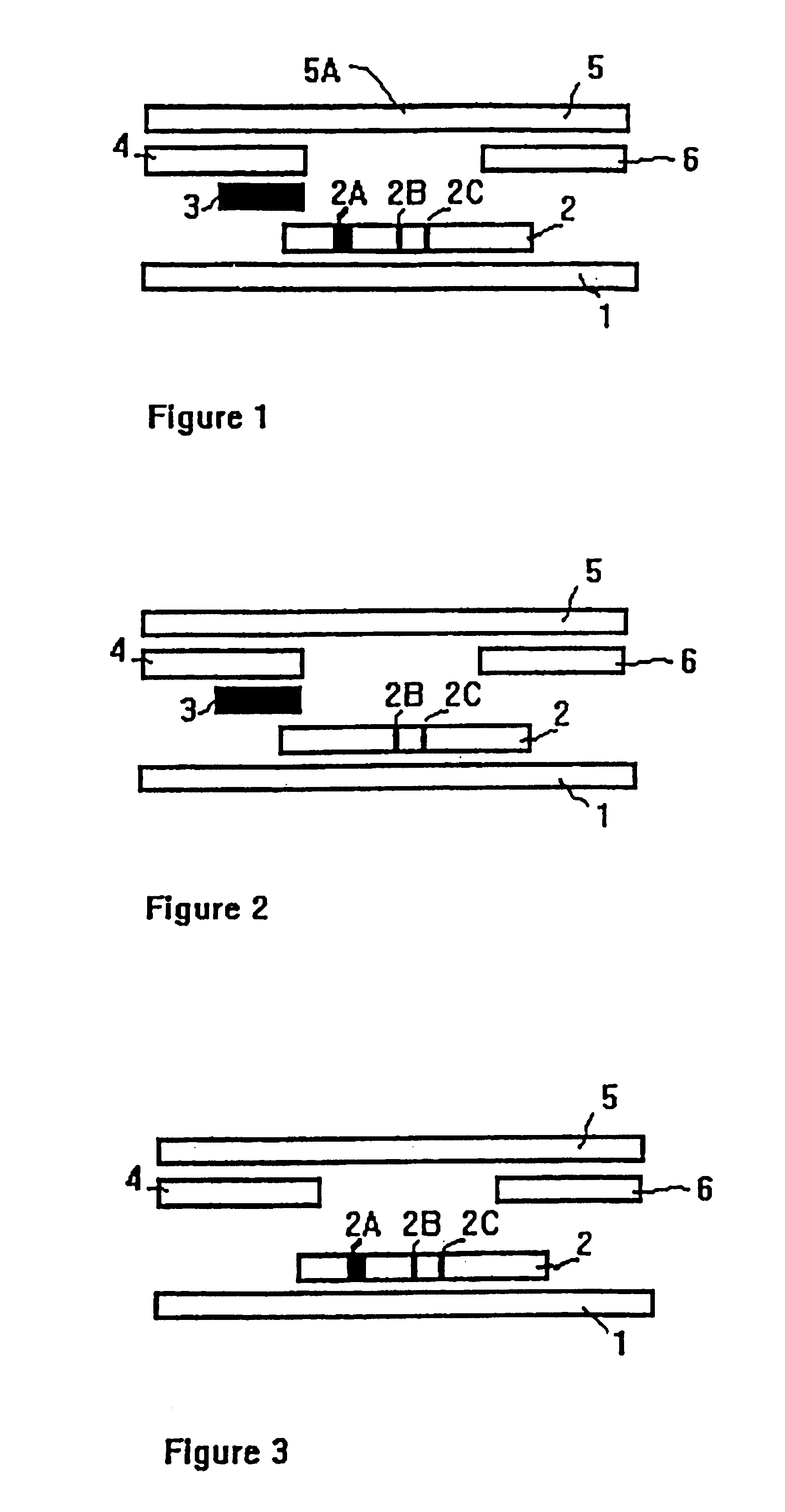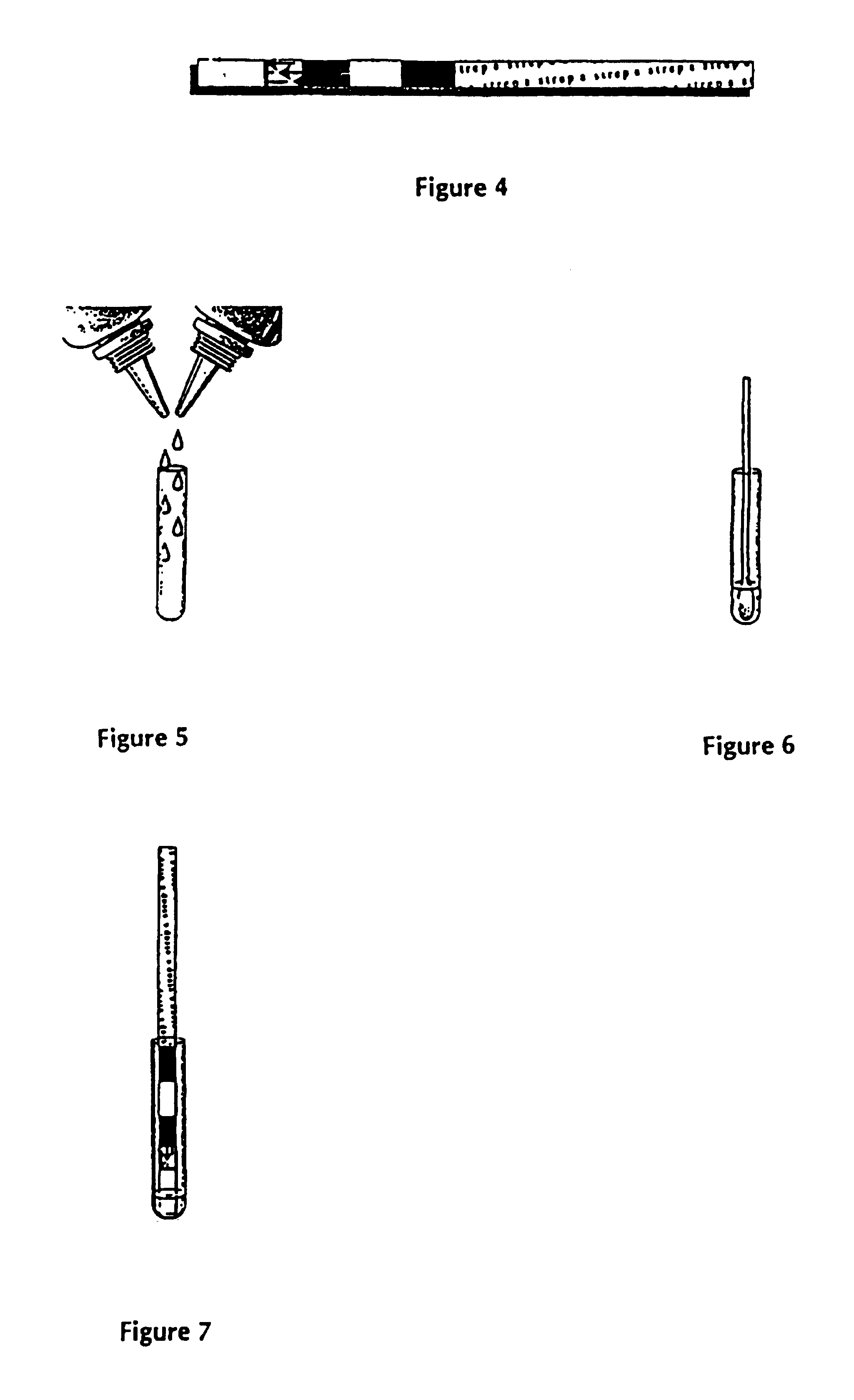Methods of use of one step immunochromatographic device for Streptococcus A antigen
a technology of immunochromatographic device and streptococcus, which is applied in the field of immunochromatographic method and device for detecting analytes, can solve the problems of complex one-step assay device, high cost, and user error, and achieve the effect of improving the accuracy of the assay
- Summary
- Abstract
- Description
- Claims
- Application Information
AI Technical Summary
Benefits of technology
Problems solved by technology
Method used
Image
Examples
example 1
One-Step Immunoassay for Strep A Which Does Not Require Sample Manipulation
[0121]Most preferably the one-step assay device will contain an OSOM™ Strep A Test . The OSOM™ Strep A Test detects either viable or nonviable Group A Streptococcus organisms directly from a throat swab, providing results within 5 minutes.
[0122]Specimens may be collected with a sterile swab from the tonsils and / or the back of the throat, taking care to avoid the teeth, gums, tongue or cheek surfaces. Sterile swabs may be used to collect the specimens. Preferably sterile rayon or dacron swab are used to collect specimens. Alternately, swabs with transport tubes containing liquid media can also be used. Preferably the liquid media used in transport tubes will be Modified Stuart's Transport Media (“CULTURETTE” available from Becton Dickinson).
[0123]The OSOM™ Strep A Test can be used for the qualitative detection of Group A Streptococcal antigen from throat swabs or confirmation of presumptive Group A Streptococc...
PUM
| Property | Measurement | Unit |
|---|---|---|
| pore size | aaaaa | aaaaa |
| time | aaaaa | aaaaa |
| thick | aaaaa | aaaaa |
Abstract
Description
Claims
Application Information
 Login to View More
Login to View More - R&D
- Intellectual Property
- Life Sciences
- Materials
- Tech Scout
- Unparalleled Data Quality
- Higher Quality Content
- 60% Fewer Hallucinations
Browse by: Latest US Patents, China's latest patents, Technical Efficacy Thesaurus, Application Domain, Technology Topic, Popular Technical Reports.
© 2025 PatSnap. All rights reserved.Legal|Privacy policy|Modern Slavery Act Transparency Statement|Sitemap|About US| Contact US: help@patsnap.com



